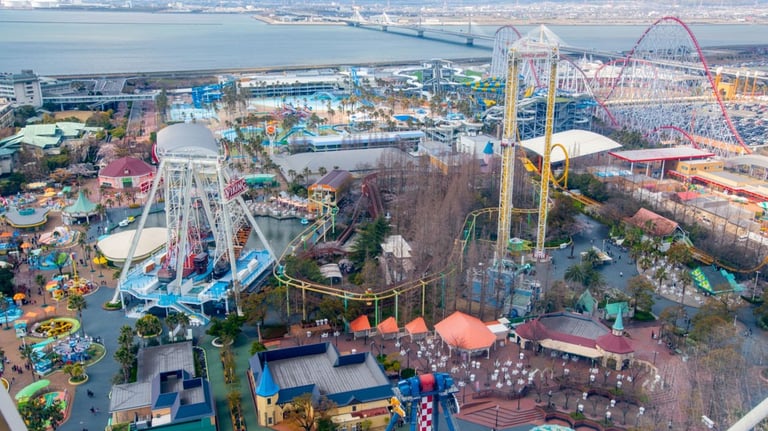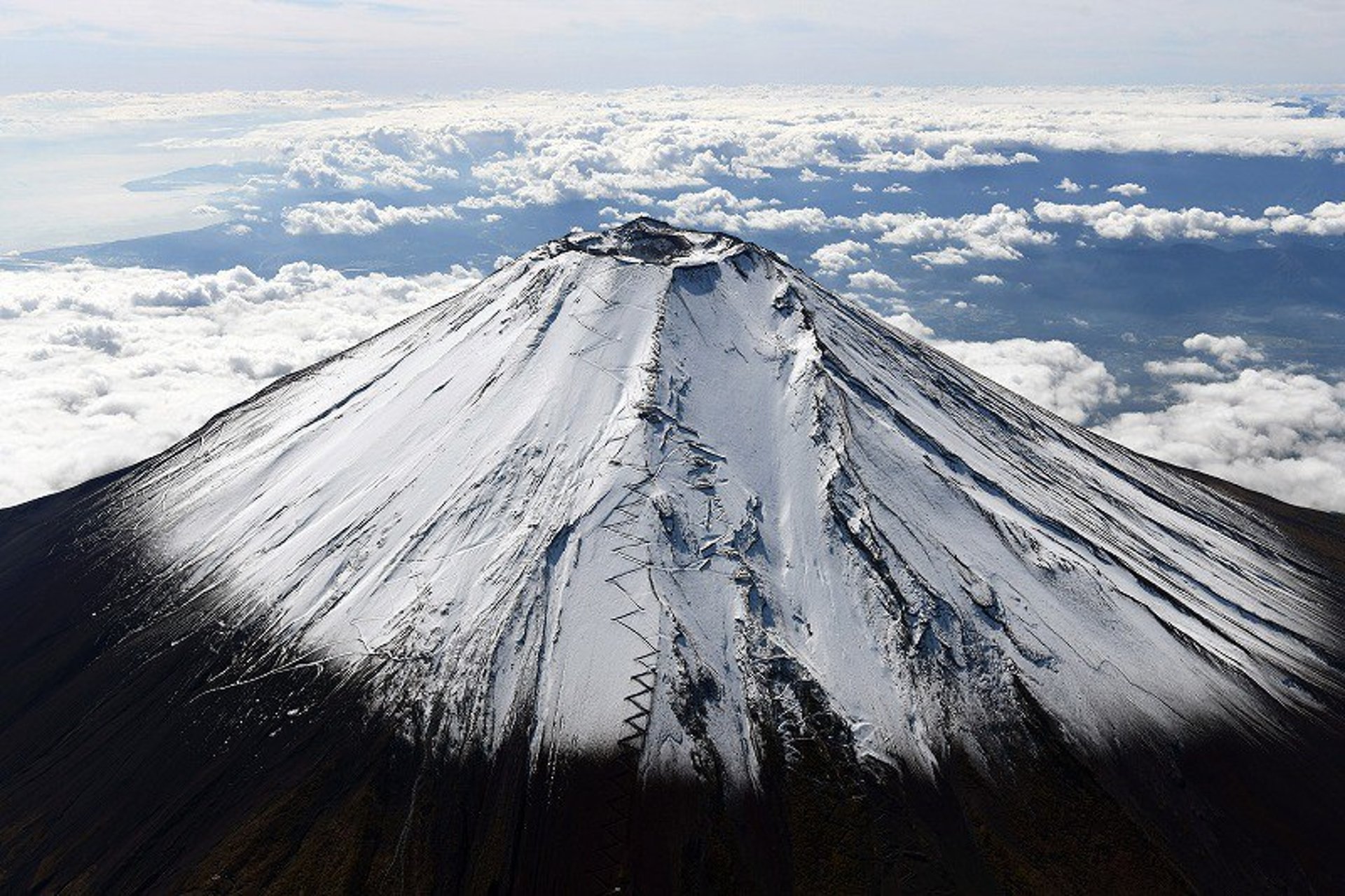
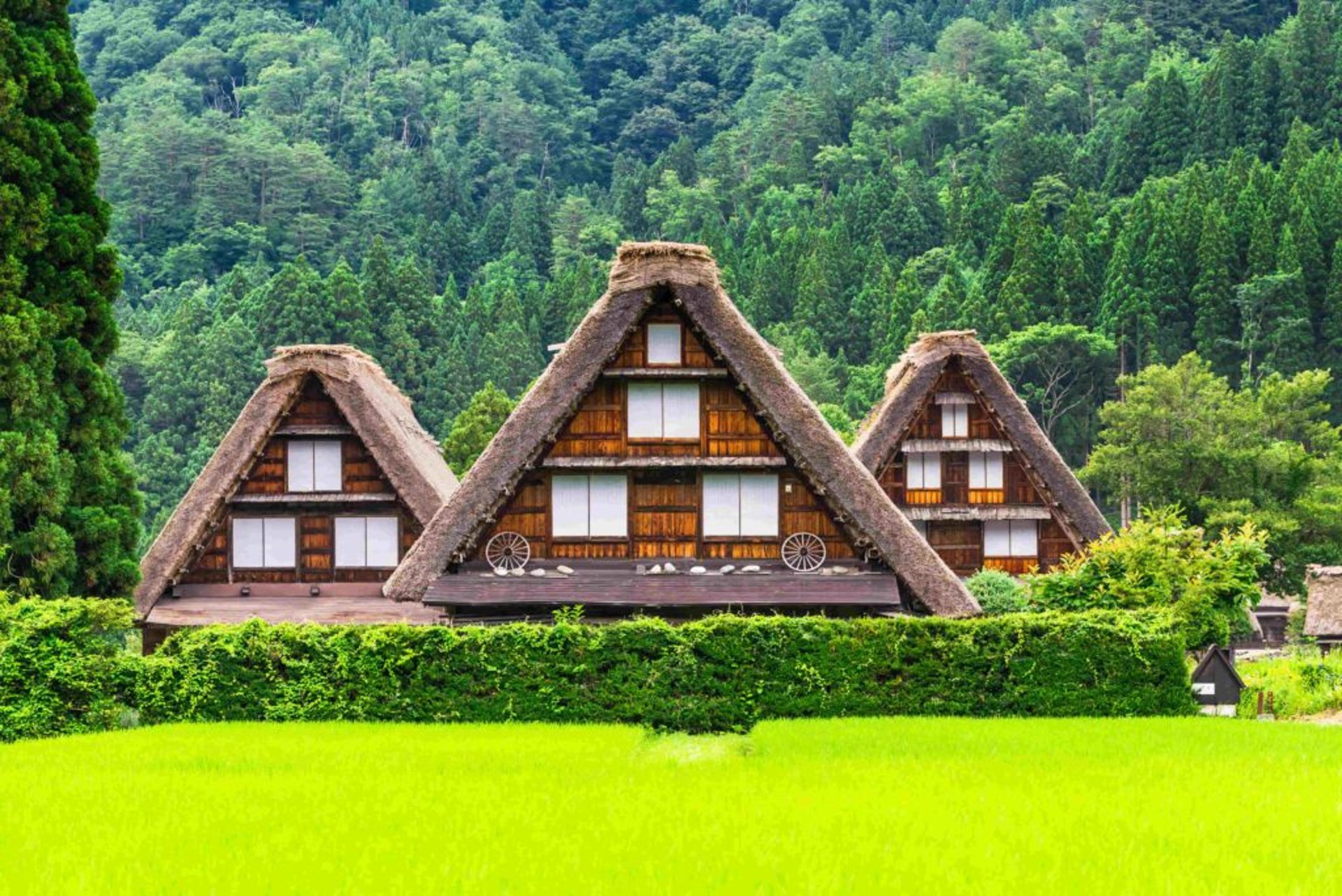
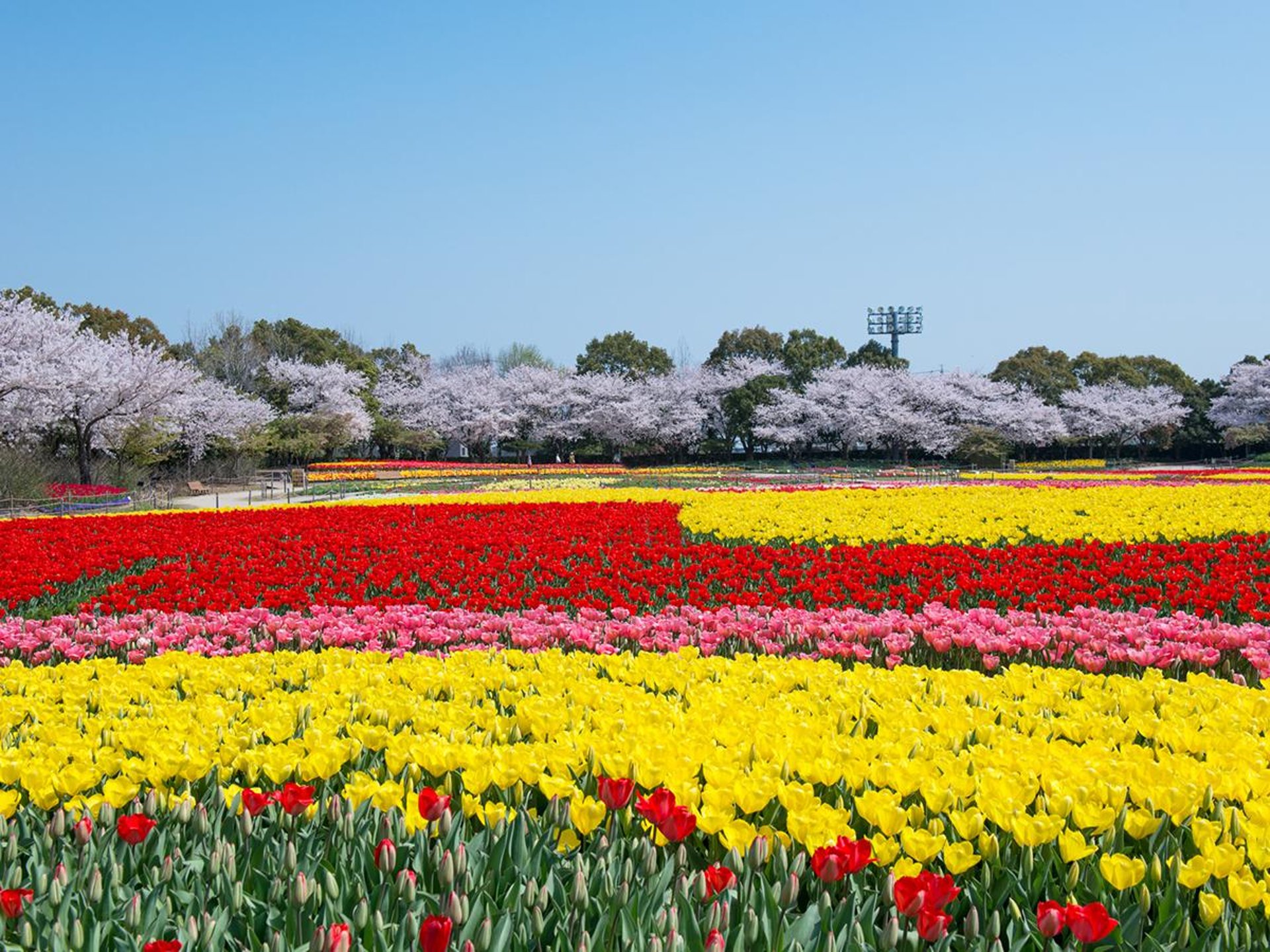
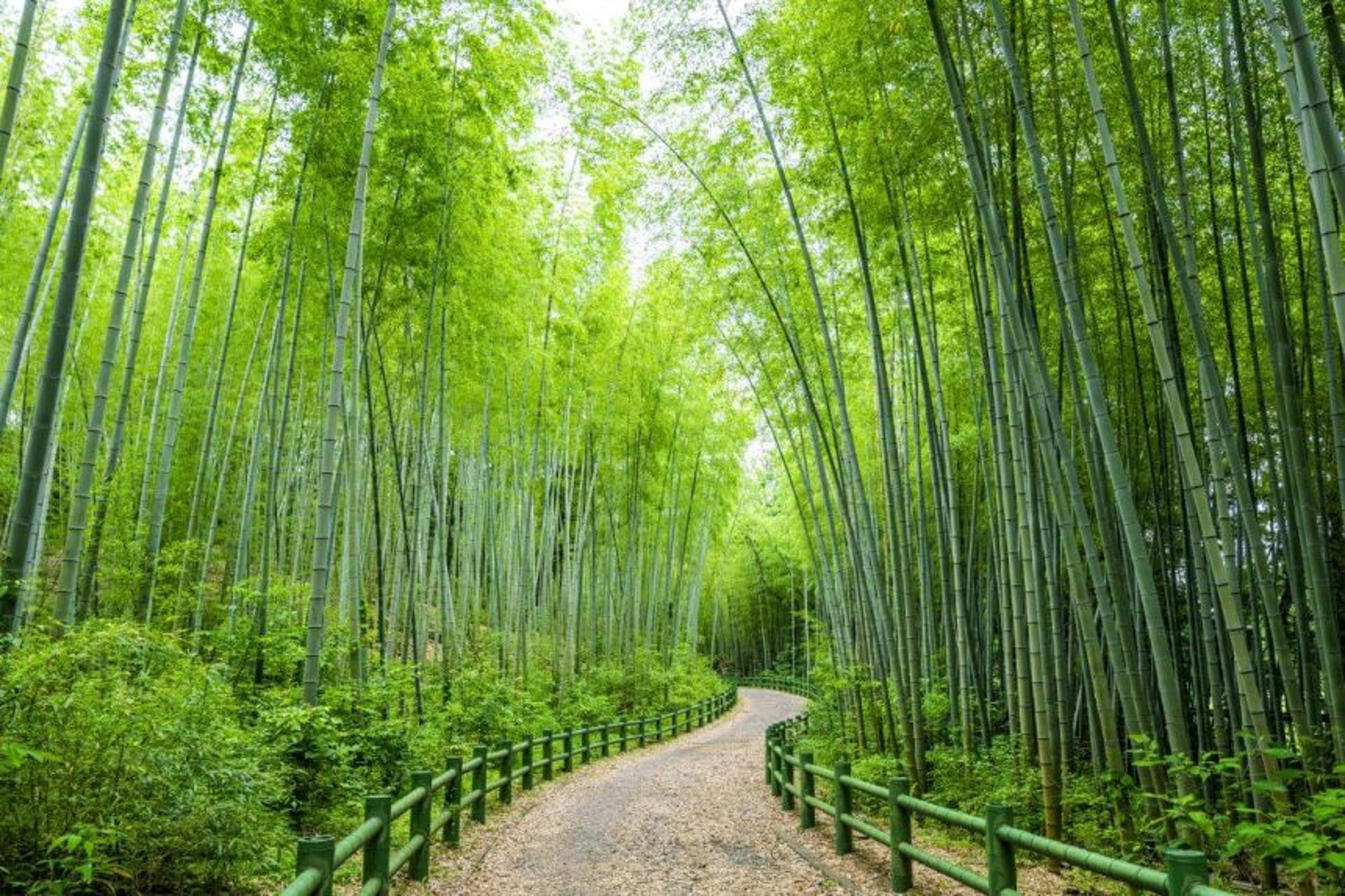
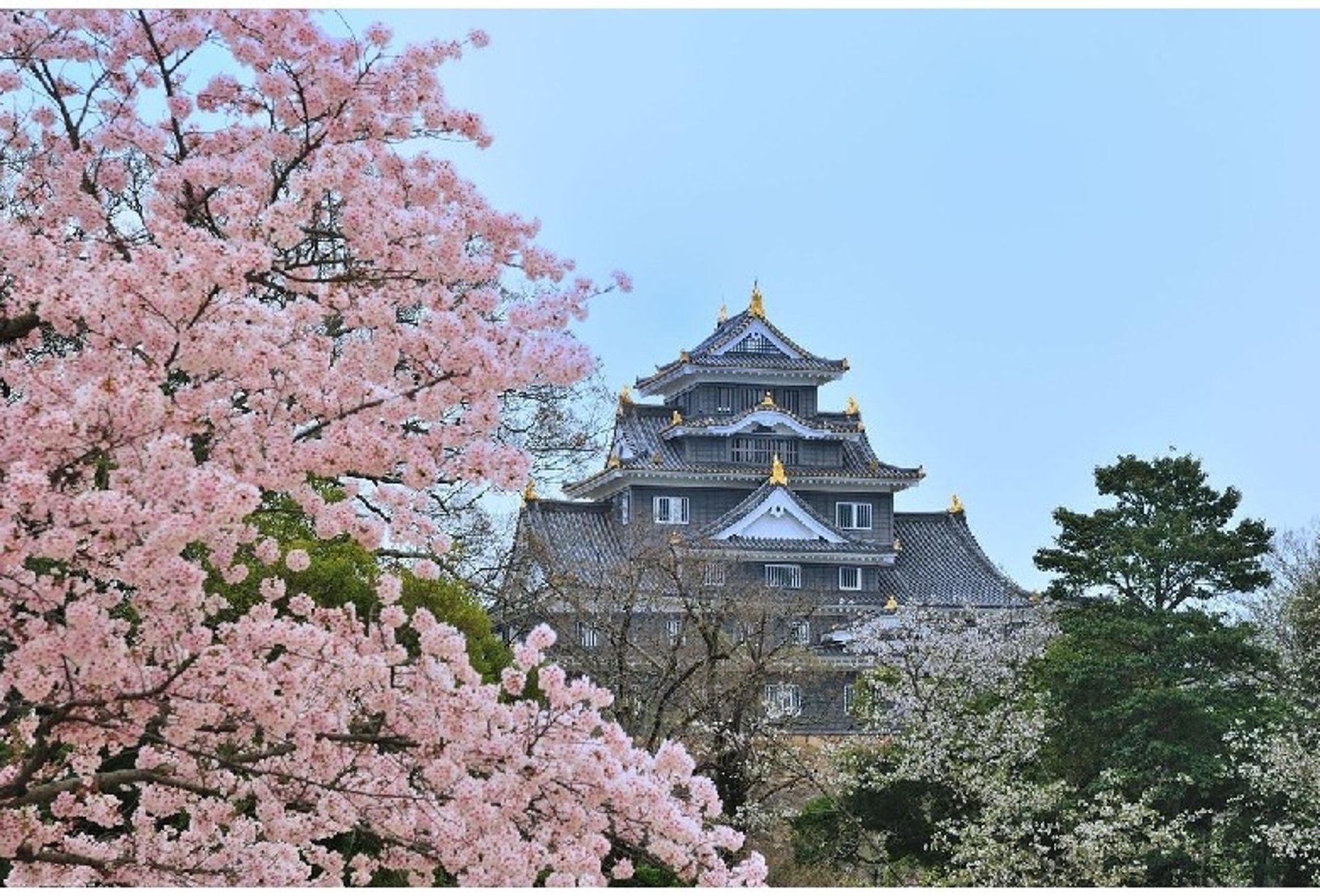
Tokai
The Tokai region is located in central Japan and consists of four prefectures: Aichi, Gifu, Shizuoka, and Mie. The region has developed as a transportation hub since ancient times and still plays an important role in the economy and tourism. Nagoya City is the central city, and it is also one of the leading industrial areas in Japan. Here are some of the attractions of the sightseeing spots.
Tokai's Seasonal Attractions
The Tokai region consists of Aichi, Gifu, Shizuoka, and Mie prefectures and is located in the Chubu region. This region combines rich nature and historical culture, and visitors can enjoy different attractions throughout the four seasons. There is a wide variety of tourist attractions from mountains, oceans, hot spring resorts, and even urban areas, and the seasonal events and food are not to be missed.
Spring (March to May)
In spring, the Tokai region welcomes the arrival of a new season with beautiful scenery colored by cherry blossoms and fresh greenery. As the weather gets warmer, you can also enjoy outdoor activities.
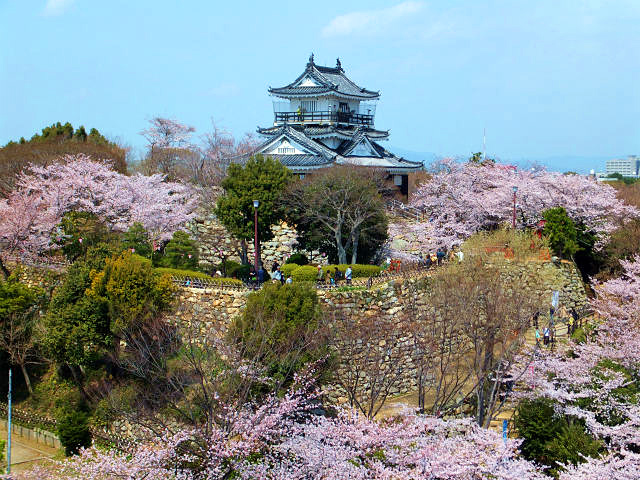

Attractions and Activities
・Tours of famous cherry blossom spots
Nagoya Castle (Aichi Prefecture)
Around Nagoya Castle, the symbol of Nagoya City, about 1,000 cherry trees are in full bloom.
Ise Jingu Geku (Mie Prefecture)
One of Japan's most powerful spots, where cherry blossoms and a traditional atmosphere blend in harmony.
Gujo Hachiman Castle (Gifu Prefecture)
The collaboration of the castle town and cherry blossoms is fantastic.
Hamamatsu Castle Park (Shizuoka Prefecture)
The view of the cherry blossom trees and castle ruins is beautiful, and the park is crowded with cherry blossom viewers.
・Flower Festivals
Events to enjoy spring flowers are held in various places, such as the Tulip Festival in Gotemba Highlands in Shizuoka Prefecture and the rapeseed fields in Toyota City, Aichi Prefecture.
Summer (June to August)
After the rainy season ends, it's recommended to avoid the heat and spend the summer on the plateau or the coast. Fireworks displays and summer festivals are also a staple of summer in the Tokai region.
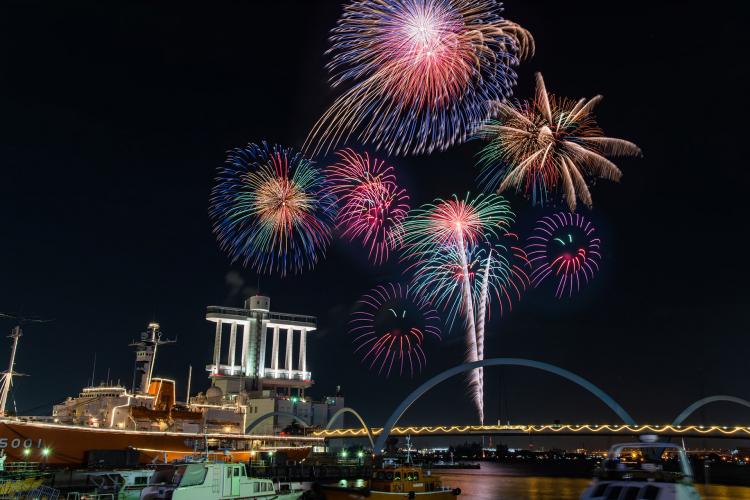

Attractions and Activities
・Plateaus as summer resorts
Hida Takayama in Gifu Prefecture and Shizuoka Prefecture
Hida Takayama in Gifu Prefecture and Sumata Gorge in Shizuoka Prefecture are characterized by their cool climate and beautiful nature, making them ideal for refreshing in the summer.
Mt. Mitake and the Southern Alps
Mt. Mitake and the Southern Alps, located on the border with Nagano Prefecture, are also popular for hiking and trekking.
・Fireworks festivals
The Nagaoka Fireworks Festival is particularly famous, and you can enjoy spectacular fireworks.
Nagoya Port Festival Fireworks Festival (Aichi Prefecture)
A large-scale fireworks festival set in Nagoya Port.
Atami Marine Fireworks Festival (Shizuoka Prefecture)
Fireworks launched over the sea light up the night sky.
Ise Shrine Dedicated National Fireworks Festival (Mie Prefecture)
A grand event with the sacred Ise Shrine as a backdrop.
・Summer Festivals
Gujo Odori (Gifu Prefecture)
One of the three major Bon Odori festivals in Japan, this traditional dance is held every night for about a month.
Nagoya Minato Festival (Aichi Prefecture)
A lively event unique to a port town, featuring boat parades and stage shows.
Autumn (September to November)
Autumn is the season of autumn leaves, when the mountains and valleys of the Tokai region are dyed in fiery reds and yellows. It is also the season of harvest, and delicious foods can be enjoyed.
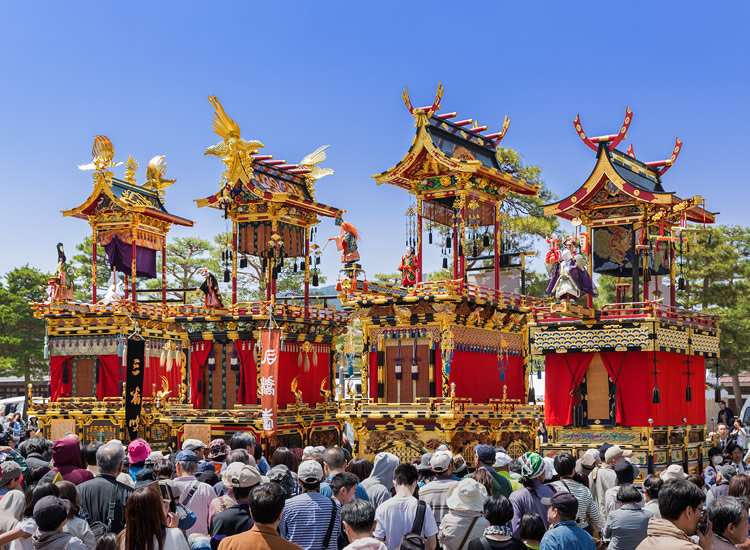

Attractions and Activities
・Foliage viewing spots
Korankei (Aichi Prefecture)
A popular spot in the West Mikawa region, where maples and other trees adorn the beautiful valley.
Okuoikojo Station (Shizuoka Prefecture)
A hidden station in the mountains, with a spectacular view of the surrounding autumn leaves.
Yoro Falls (Gifu Prefecture)
One of Japan's three most famous waterfalls, the contrast with the autumn leaves is stunning.
Ise-Shima National Park (Mie Prefecture)
You can enjoy the autumn leaves of both the sea and the mountains.
・Fall flavors
There are plenty of gourmet foods unique to autumn, such as mandarin oranges and chestnuts in Shizuoka Prefecture, Hida beef in Gifu Prefecture, and Matsusaka beef and spiny lobster in Mie Prefecture.
・Events
Takayama Festival (Gifu Prefecture)
One of Japan's three most beautiful festivals, with gorgeous floats parading through the city.
Okage Yokocho at Ise Shrine (Mie Prefecture)
A place where you can enjoy special autumn events and local specialties.
Winter (December to February)
In the Tokai region, winter is relatively warm in many areas, but in the mountainous areas, snowy landscapes spread out and you can enjoy winter sports. Traditional year-end and New Year events are also worth seeing.
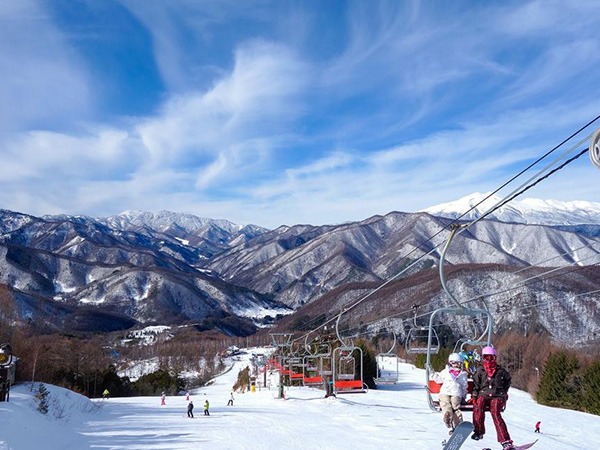

Attractions and Activities
・Snowy scenery and winter sports
Shirakawa-go in Gifu Prefecture is a very romantic village with its snow-covered Gassho-style houses.
At Sumatakyo in Shizuoka Prefecture and Mount Horaiji in Aichi Prefecture, you can enjoy trekking and sightseeing in the snowy scenery.
Popular ski resorts include Dynaland in Gifu Prefecture and Snow Town Nomugi in Shizuoka Prefecture.
・Illuminations
Nagoya Christmas Market (Aichi Prefecture)
A German-style Christmas market adds color to the winter city.
Illuminations in Naka Ward, Hamamatsu City
Enjoy the fantastic scenery of the whole city enveloped in light.
・Winter flavors
There are plenty of hotpot dishes and seafood dishes unique to winter, such as "kanburi" (cold yellowtail) and "oysters" in Shizuoka Prefecture, "Ise lobster" in Mie Prefecture, and "tebasaki nabe" (chicken wing hotpot) in Aichi Prefecture.
Popular Attractions in Tokai
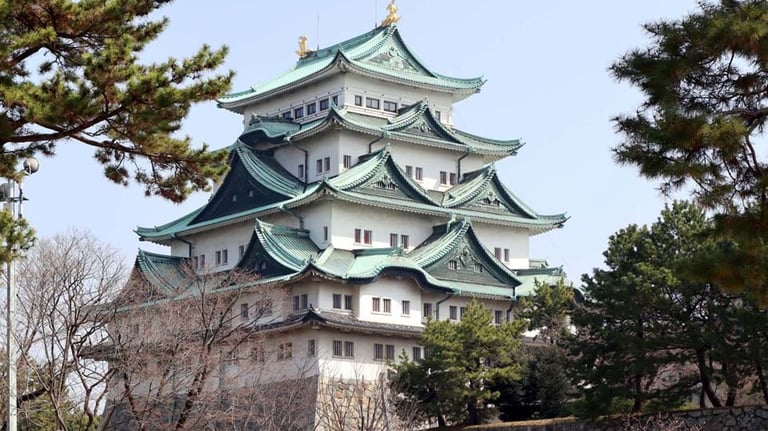

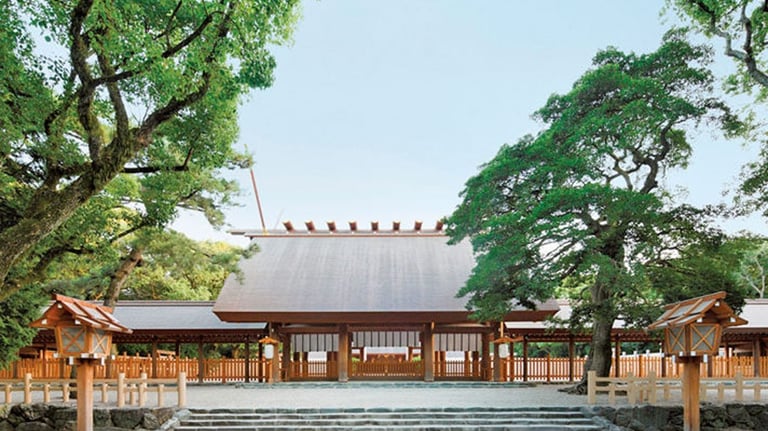

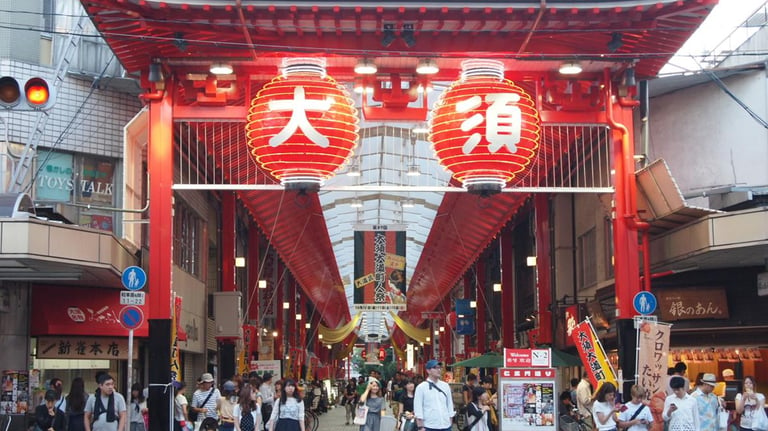

Aichi prefecture
Aichi Prefecture is located in the Chubu region of Japan and is the central prefecture of the Tokai region. The prefectural capital is Nagoya City, which is one of Japan's largest cities and serves as an economic and cultural hub. Aichi Prefecture is a fascinating place where history and modernity blend together, making it a very popular tourist destination. It is also famous for its automobile industry and traditional crafts. Below is some useful information for tourists visiting Aichi Prefecture.
Located in Nagoya City, Aichi Prefecture, Japan, this historic castle was built in the early Edo period and is known as one of the "Three Great Castles of Japan." It was built primarily by Toyotomi Hideyoshi's vassals, Kato Kiyomasa and Fukushima Masanori, and later flourished as the residence of the Tokugawa family of the Owari Domain. Today, it attracts many tourists as a symbol of Nagoya City.
Nagoya Castle
Atsuta Shrine
Atsuta Shrine is a historic shrine located in Nagoya City, Aichi Prefecture, Japan, and is a nationally famous power spot. It has a history of over 1900 years and is considered one of the "Three Great Shinto Shrines of Japan." It is said to enshrine the Kusanagi sword, which was dedicated by Emperor Yamato Takeru during his expedition to the east. This sword is considered one of the "Three Sacred Treasures" and symbolizes the shrine's history.
Osu Shopping Street
Osu Shopping Street is a historic shopping district located in Naka-ku, Nagoya City, Aichi Prefecture, Japan. The origins of Osu Shopping Street date back to the Edo period.Initially, it developed as the gateway to the “Osu Kannon” . After the Meiji period, it grew as a commercial district and developed into the bustling shopping street it is today, beloved by many tourists and locals alike.
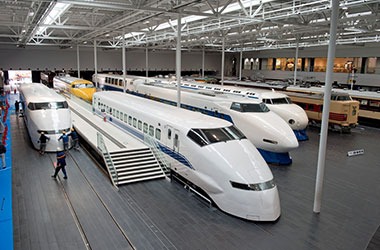

Linear and Railway Museum
The Linear & Railway Museum is a railroad museum in Nagoya, Aichi, Japan, where visitors can experience the history and future of Japan's world-class railroad technology. Of particular interest are the exhibits of the superconducting linear motor car “Linear” and the simulated driving experience.
Inuyama Castle
Inuyama Castle was built by Oda Nobuyasu in 1537. Located in Inuyama City, Aichi Prefecture, Japan, this historical castle is one of the 12 existing castle towers in Japan and is designated as a national treasure. Its beautiful appearance harmonizes with the scenery along the Kiso River, attracting many tourists as "the oldest existing castle tower in Japan.
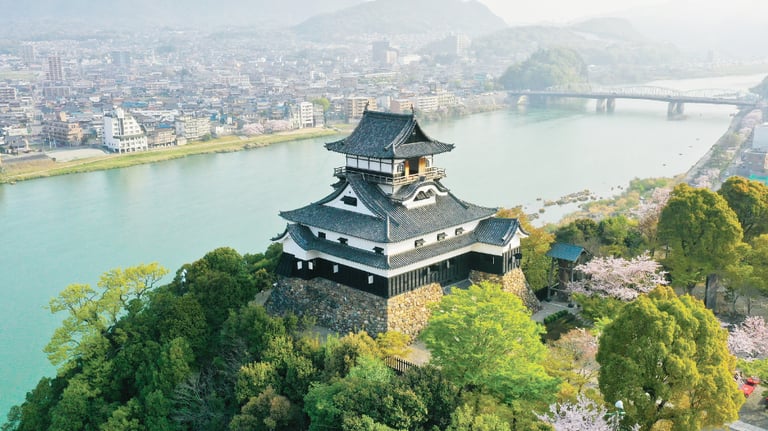

Chausuyama Plateau is a plateau area located in Toyone Village, Aichi Prefecture. This area is located at an altitude of about 1,400 meters and is popular as a tourist spot where you can enjoy natural scenery and a variety of activities. It is also known as one of the leading summer resorts in Aichi Prefecture, and is visited by many people throughout the year.
Chausuyama Plateau
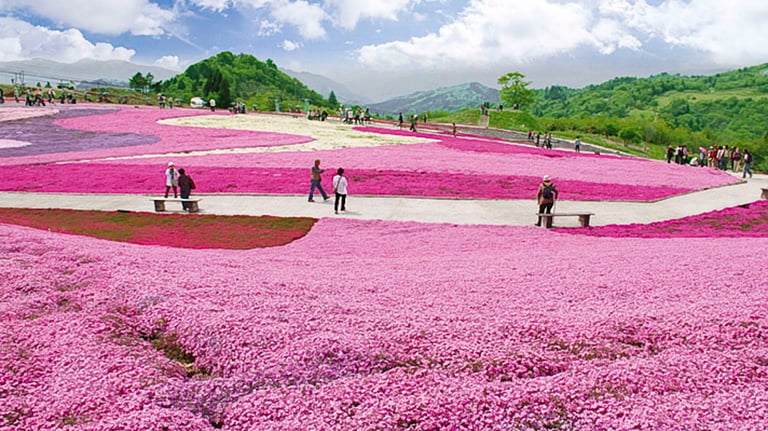

Laguna Ten Bosch
Laguna Ten Bosch is a resort facility located in Gamagori, Aichi Prefecture, Japan. It is a complex theme park where you can enjoy shopping, entertainment, hot springs, and more. It opened in 1995 and is characterized by its design and attractions based on the theme of "sea and European cityscapes." It is popular among a wide range of people, including families, couples, and groups of friends.
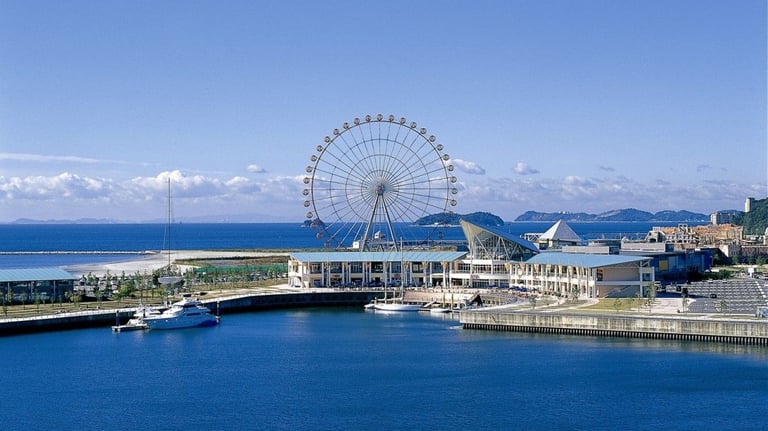

Takeshima
Takeshima is a small island located in Gamagori City, Aichi Prefecture, Japan, and is a popular tourist spot for locals. The island is connected to the mainland by a bridge, making it easy to visit. There are also shrines and observation decks on the island, making it a popular spot for sightseeing and walking.
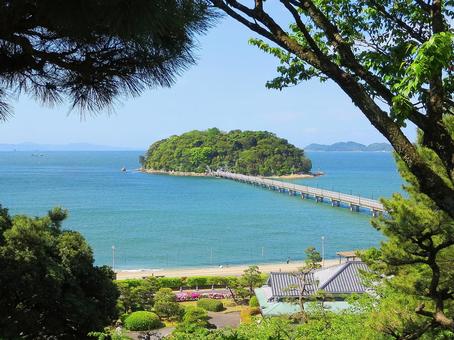

Korankei
Korankei is located in Toyota City, Aichi Prefecture, Japan, and is one of the best places in Japan to view the autumn foliage and enjoy beautiful natural scenery from season to season. It is especially popular during the fall foliage season, when it attracts many tourists from all over Japan. The name “Korankei” is said to have been given by a Buddhist monk who visited the area and was impressed by the "fragrant scenery.
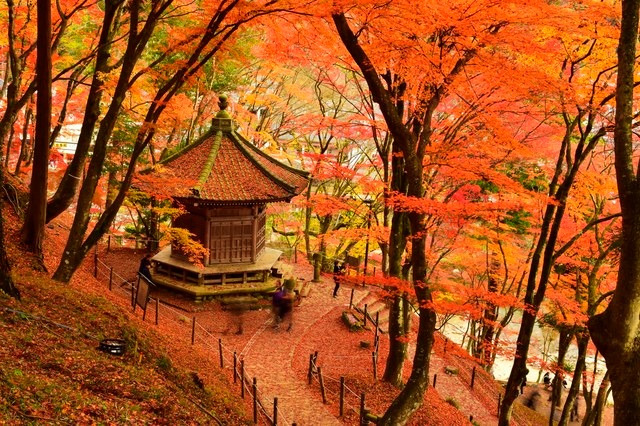

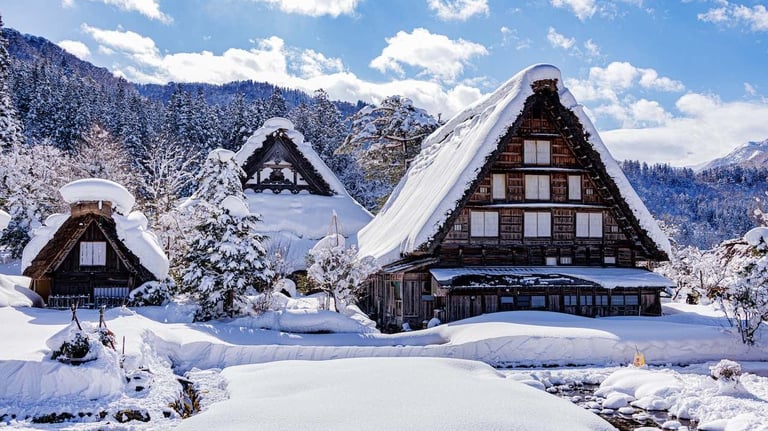

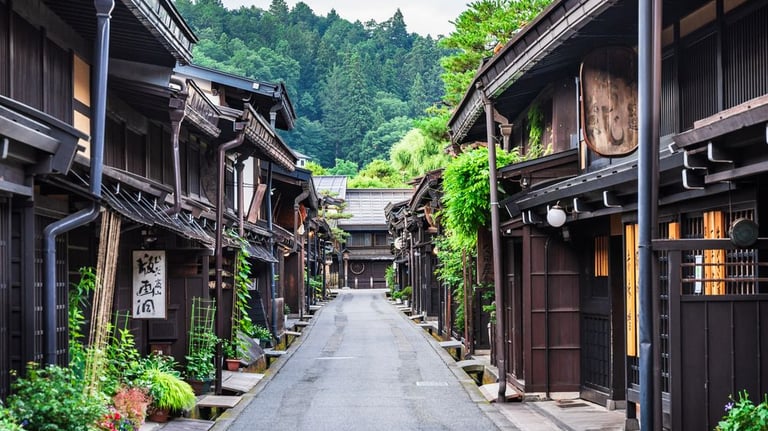

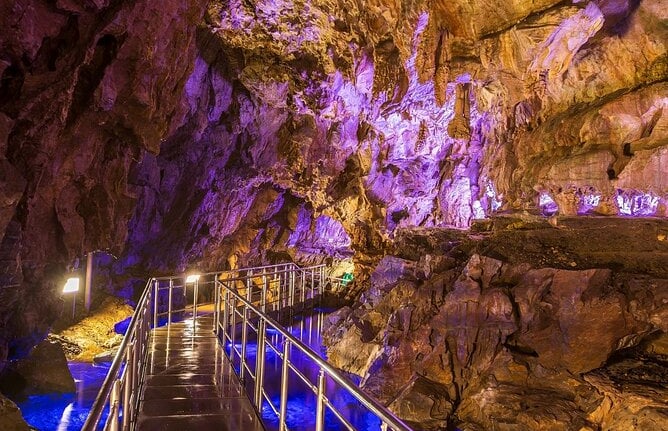

Gifu Prefecture
Gifu Prefecture is located in the Chubu region of Japan and belongs to the northwestern part of the Tokai region. The prefectural capital is Gifu City, which is characterized by its natural mountainous terrain and historical culture. It is divided into two regions, “Hida” and “Mino,” each with its own distinct charm. Gifu Prefecture is a very popular tourist destination, and visitors can enjoy beautiful scenery and traditions throughout the four seasons. Below is some useful information for tourists visiting Gifu Prefecture.
Shirakawa-go is a tourist destination located in Shirakawa Village, Ono District, Gifu Prefecture, and is characterized by its beautiful Gassho-style villages that are registered as UNESCO World Heritage Sites. It is a popular spot that attracts many tourists from not only Japan but also overseas. In particular, the combination of the winter snow scenery and traditional houses creates a fantastical landscape that is like something out of a fairy tale.
Shirakawa-go
Hida Takayama
Hida Takayama is a tourist destination located in the northern part of Gifu Prefecture, and is characterized by its historical townscape, which has earned it the nickname "Little Kyoto of Hida." Many tourists from Japan and abroad visit the area, which is known for its harmony of old streets and traditional culture dating back to the Edo period, and rich nature. Local delicacies, including "Hida beef," a representative dish of the Hida region, are also popular.
Hida Daisho Cave
Hida Great Cave is a tourist spot in Takayama, Gifu Prefecture, where you can experience the wonders of nature, with a total length of about 800 meters. It is one of the largest limestone caves in Japan, and is characterized by its mysterious scenery that was formed over a period of about 150 million years. Inside the cave, you can enjoy a fantastical world with stalactites of various shapes and an underground lake.
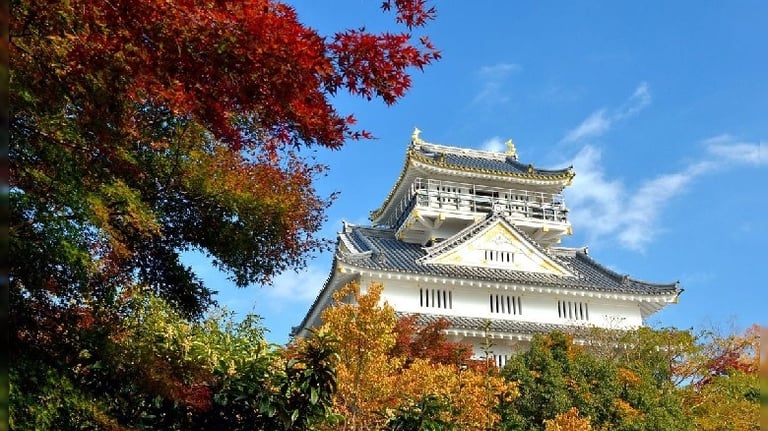

Gifu Castle
Gifu Castle is a historic castle located in Gifu City, Gifu Prefecture, and is one of the famous castles that played an important role during the Sengoku period. Located at the top of Mount Kinka, it is also popular as a scenic spot overlooking the surrounding landscape. It is known as the castle where Oda Nobunaga lived in his quest to unify the country, and is also famous as "Nobunaga's Castle."
Okuhida Onsenkyo
Oku-Hida Onsenkyo is a group of hot spring resorts located in the northern part of the Hida region of Gifu Prefecture, and is a secluded tourist spot surrounded by the natural beauty of the Japanese Alps. This area is made up of five hot spring resorts, and has long been loved by many people as a "secret hot spring." This is an area that should be visited by anyone who wants to escape from everyday life and heal their body and mind, or who is interested in exploring hidden places.
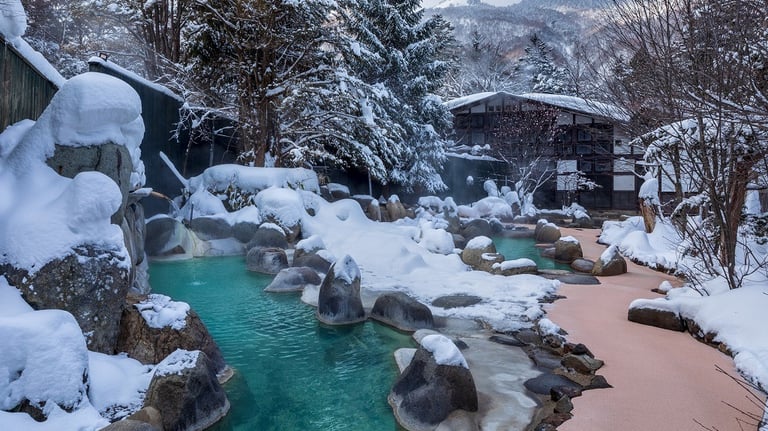

Magome-juku is located in the mountains at an altitude of about 500 meters and is surrounded by beautiful nature. It is one of the 69 stations along the Nakasendo road in Nakatsugawa City, Gifu Prefecture, Japan, and is a post town that flourished during the Edo period. The Nakasendo road is an important highway connecting Edo (present-day Tokyo) and Kyoto. Magome-juku is known as a tourist destination with a particularly picturesque landscape.
Magome-juku
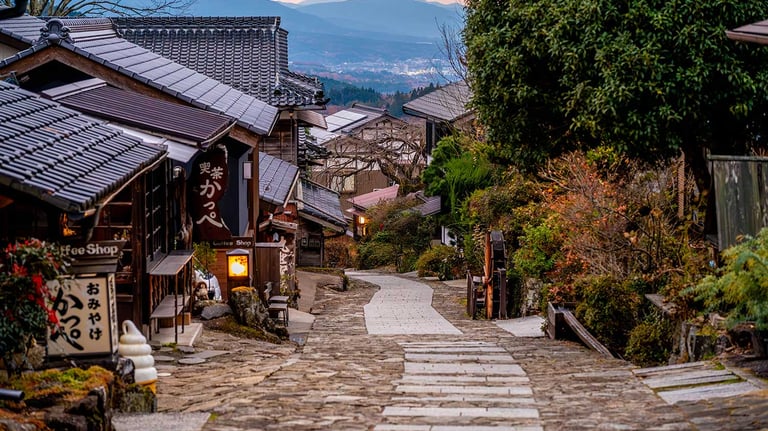

Monet's Pond
Monet's Pond is a beautiful pond located in Seki City, Gifu Prefecture, Japan. Its official name is "Nemichi Shrine Forest Pond." It is a special place where you can fully experience the beauty of nature away from the hustle and bustle of the city. The scenery created by the transparent water surface, floating water lilies, and surrounding greenery is just like a painting, and it captivates all who visit.
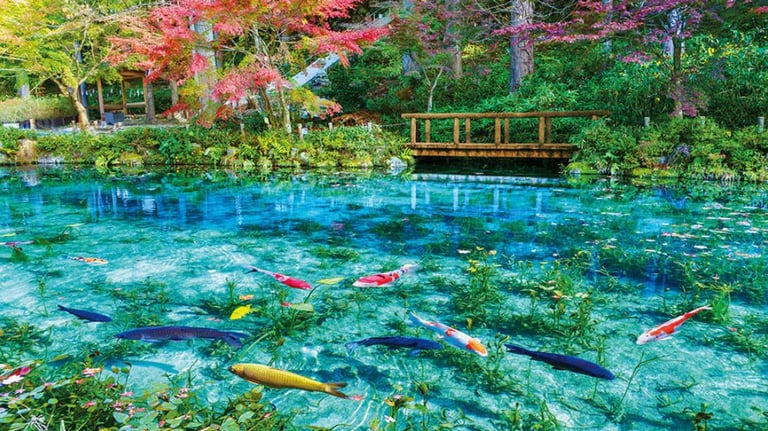

Shinhotaka Ropeway
Shinhotaka Ropeway is a tourist facility in Takayama, Gifu Prefecture, that offers a panoramic view of the natural beauty of the Japanese Alps. It is a two-stage ropeway that connects altitudes from 1,300 meters to 2,156 meters, and uses a "double-decker" system that is rare even in Japan. It is popular as a scenic spot where you can enjoy the magnificent mountains and sea of clouds of the Northern Alps.
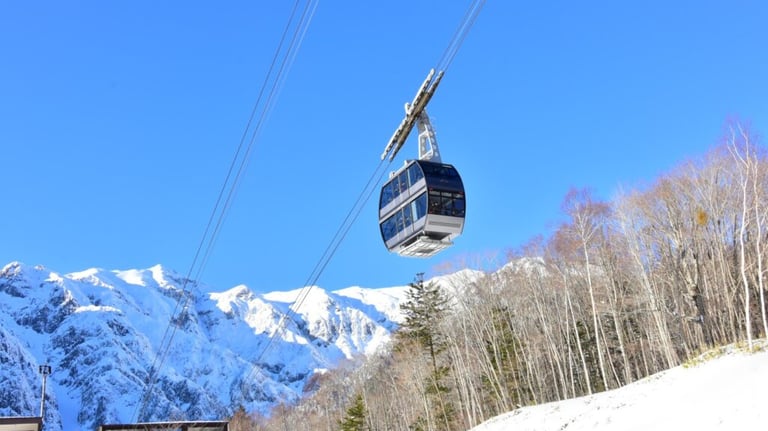

Gujo Hachiman Castle
Gujo Hachiman Castle is a mountain castle located in Gujo City, Gifu Prefecture, and is a valuable tourist attraction where visitors can enjoy both Japanese history and nature at the same time. It has been selected as one of the 100 best castles in Japan. Located at the top of Hachiman Mountain, about 350 meters above sea level, it is surrounded by lush greenery and nature. It is also known as the oldest wooden reconstructed castle in Japan, and is a sightseeing spot where visitors can enjoy its historical value and beautiful view.
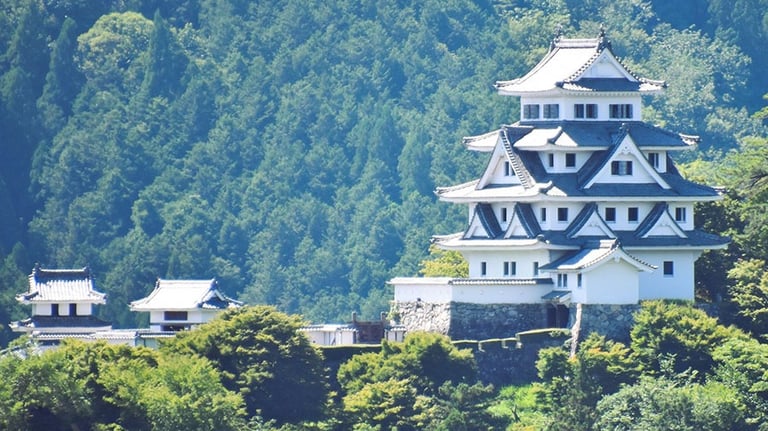

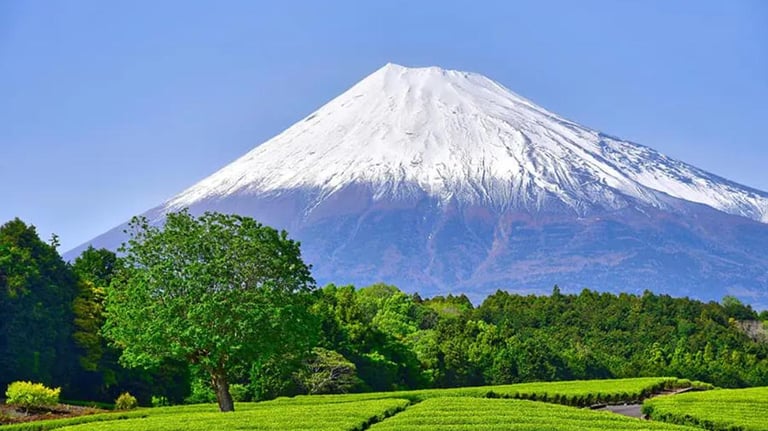

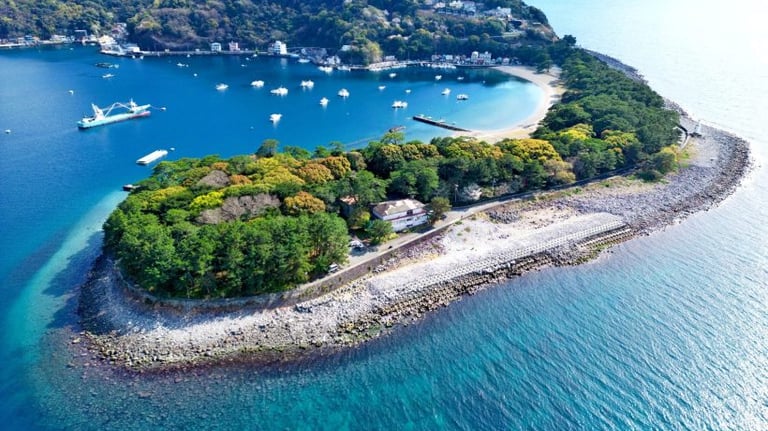

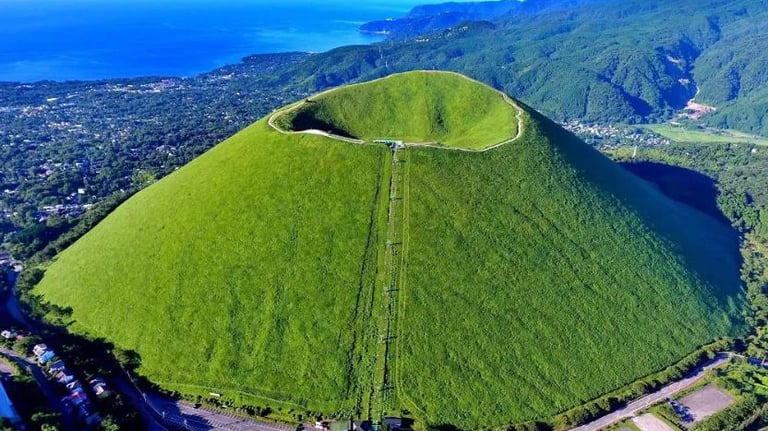

Shizuoka Prefecture
Shizuoka Prefecture is located in the central region of Japan, facing the Pacific Ocean. Mt. Fuji, its mild climate, rich agricultural products, and historical cultural heritage make it a popular destination for both domestic and international tourists. In particular, it has a variety of tourist resources, including Mt. Fuji, the highest mountain in Japan, the Izu Peninsula, famous for its hot springs, and areas with fresh seafood and tea fields. Below, we introduce useful information for tourists visiting Shizuoka Prefecture.
Fuji is not just a mountain, but a symbol of Japanese history, culture, and nature, loved by people around the world. At 3,776 meters above sea level, it is the highest mountain in Japan and was registered as a UNESCO World Heritage Site in 2013. It has long been an object of worship and a theme of art. Its beautiful appearance and grand scale continue to attract many people both in Japan and abroad.
Mount Fuji
Izu Peninsula
The Izu Peninsula is a peninsula located in Shizuoka Prefecture, in the southeastern part of Honshu, jutting out into the Pacific Ocean. It is part of the Fuji-Hakone-Izu National Park and is home to beautiful natural scenery. It is a tourist destination with a warm climate and abundant nature. It attracts many tourists from both within Japan and overseas as a region with a variety of things to enjoy, including hot springs, the sea, the mountains, and fresh seafood.
Mount Omuro
Mt. Omuro is a beautiful volcano located in the eastern part of Izu Peninsula, Shizuoka Prefecture. It is a sightseeing spot characterized by its conical shape, a scoria hill (a hill built up by volcanic debris) that erupted 4,000 years ago. At 580 meters above sea level, visitors can enjoy a 360-degree panoramic view from the summit. The lift makes it easy to ascend, making it a popular destination for tourists of all ages and genders.
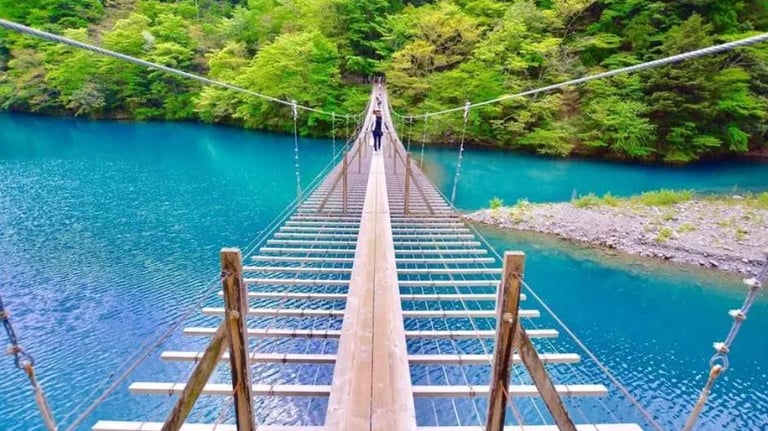

Dream Suspension Bridge
The Dream Suspension Bridge is a tourist spot in the Nishiizu area of the Izu Peninsula in Shizuoka Prefecture, located near Dogashima Island. The bridge blends in with the beautiful natural scenery around it, and is especially popular as a scenic spot overlooking the ocean. The fantastical atmosphere befitting the "dream" in its name also attracts many tourists.
Tanuki Lake
Tanuki Lake is a small lake in Fujinomiya City, Shizuoka Prefecture, and is a tourist spot where you can enjoy a spectacular view of Mt. Fuji in the background. There are campsites and walking trails in the surrounding area, and it is popular with people who enjoy the outdoors and photography enthusiasts. It is especially famous for being able to see an upside-down image of Mt. Fuji reflected on the lake's surface at sunrise and sunset.
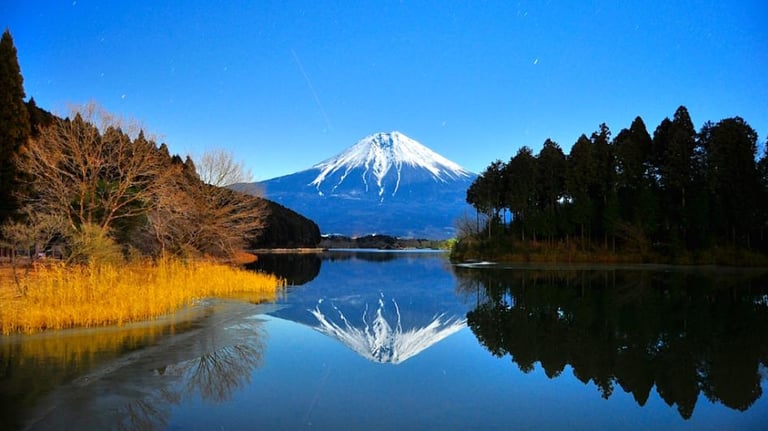

Dogashima Tensodo Cave is located on one of the uninhabited “Sanshiro-jima” islands off the coast of Dogashima and was created by wave erosion. Inside the cave, light streaming in from the sea creates a fantastic atmosphere. It is popular in Izu for its view similar to that of the Blue Cave on Capri, Italy.
Dogashima Tensodo Cave
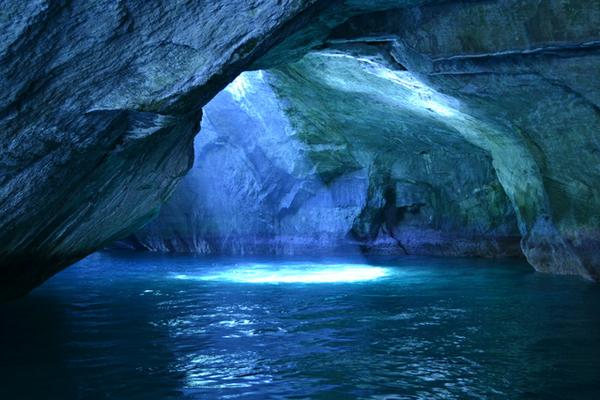

Izu Guranparu Park
Izu Guranparu Park is a popular theme park for families and couples located in Ito City, Shizuoka Prefecture, and is a tourist spot combining nature and attractions. Visitors can enjoy various activities and shows in the park, especially the famous nighttime illumination “Grand Illumi,” which attracts many visitors. Moreover, they also can enjoy activities and interaction with animals during the daytime, and at night, Grand Illumi offers a relaxing experience. It is an ideal spot especially for couples and families.
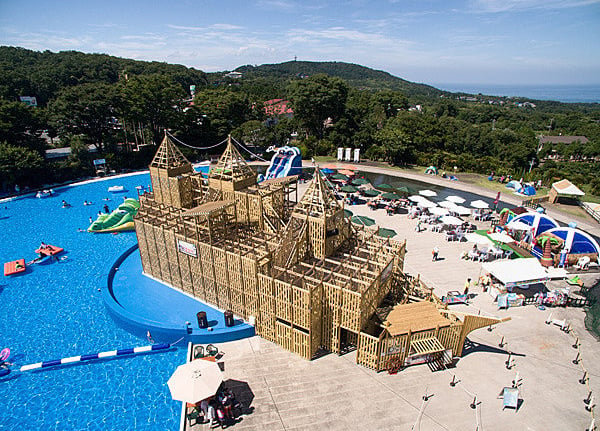

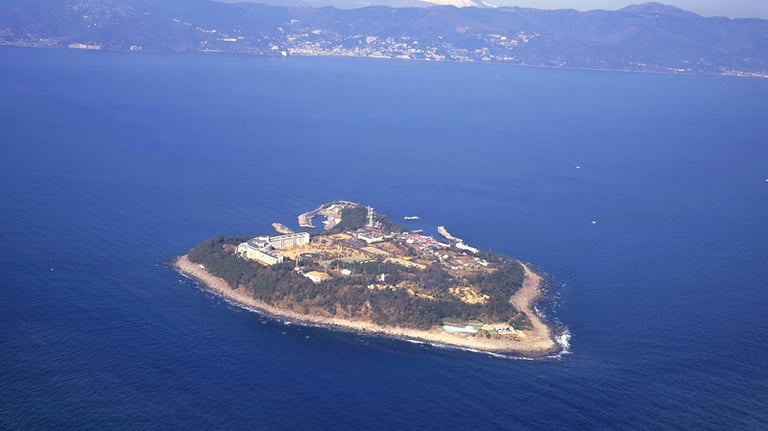

Hatsushima is a small volcanic island with a circumference of about 4 kilometers and a very small population of about 200 people, but it has a good tourist infrastructure that attracts many visitors. It is about a 25-minute ferry ride from Atami City. With its mild climate and beautiful nature, this resort is often referred to as the "Hawaii of Tokyo. It is popular among tourists and day-trippers for its harmony of pristine nature, crystal clear waters, and resort hotels.
Hatsushima
Fuji Safari Park
Fuji Safari Park is one of Japan's leading safari parks, opened in 1980 and located at the foot of Mount Fuji, surrounded by abundant nature. The park has a spacious environment where animals can roam freely, allowing visitors to see them in their natural state. The vast grounds are home to over 1,000 animals of about 100 different species, and visitors can tour the park by car or bus to observe animals in a state close to the wild. The Safari Zone is particularly popular for its close-up encounters with wild animals such as lions and tigers.


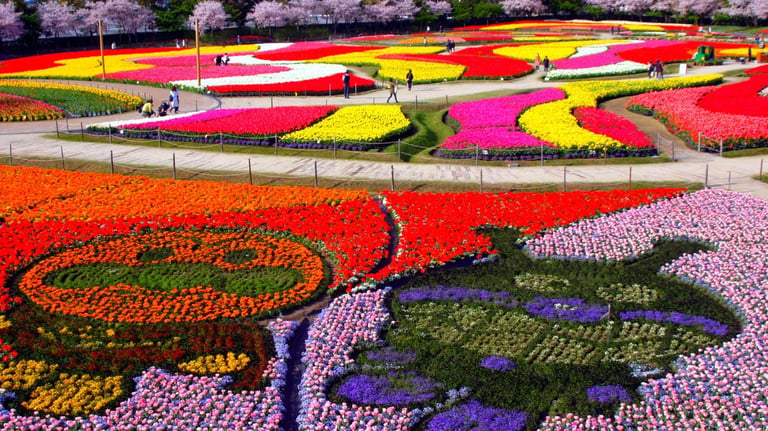

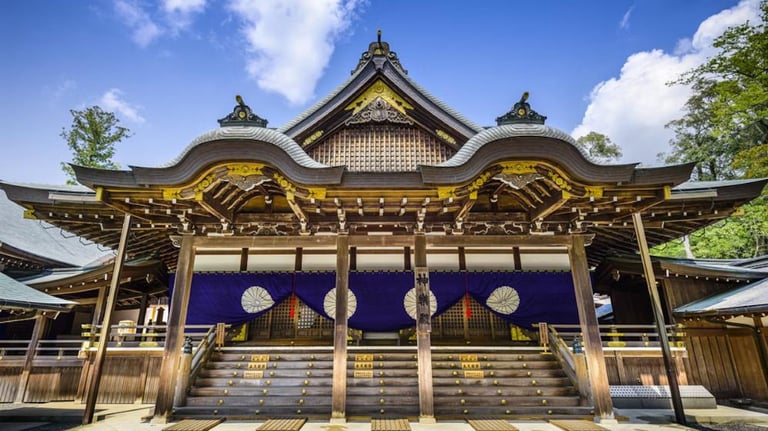

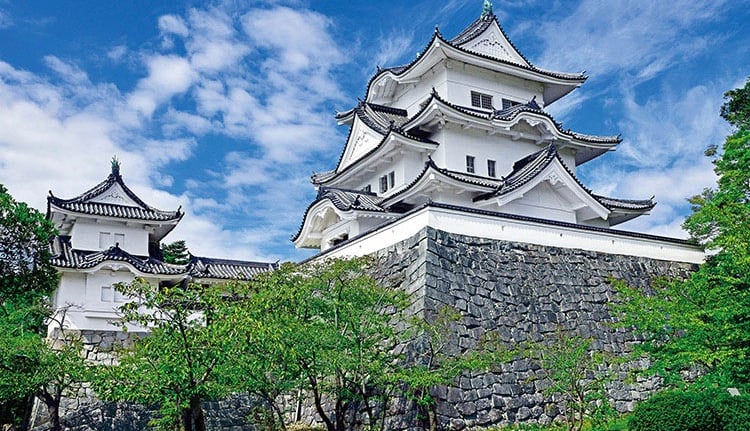

Mie Prefecture
Mie Prefecture is located in the Kinki region, and is a prefecture where diverse nature and history blend together, from the sacred land of Ise-Shima to the mountainous region of Kumano and the coastline of the Shima Peninsula. It has long been known as the "Land of the Gods," and is dotted with sacred sites such as Ise Shrine, the ninja village of Iga, and the sacred sites of the Kumano Kodo. Below is some useful information for tourists visiting Mie Prefecture.
Nabana-no-Sato is a flower and greenery theme park located in Kuwana City, Mie Prefecture, and is part of Nagashima Resort operated by Nagashima Kanko Kaihatsu Co. On its vast grounds of approximately 300,000 m2, visitors can appreciate a variety of flowers and trees throughout the four seasons. Cherry blossoms, tulips, and nemophila in spring, hydrangeas and fireflies in summer, cosmos and dahlias in fall, and one of Japan's most famous illumination events in winter.
Nabana no Sato
Ise Shrine
Ise Shrine consists of a total of 125 shrines. It is said to have existed for over 2000 years. The origins of the Inner Shrine in particular are said to date back to around the 4th century BC, and it has been revered as a central presence in Japanese spiritual culture from ancient times to the present day. Ise Shrine also has a unique tradition called "Shikinen Sengu," in which the shrine buildings are rebuilt once every 20 years. Through this ceremony, traditional techniques and the spirit of Shinto are passed down to future generations.
Iga Ueno Castle
Iga Ueno Castle is a historic castle ruin located in Iga City, Mie Prefecture, and is also known as Hakuho Castle. It is famous for its extremely high stone walls, which are considered to be one of the three tallest in Japan. It is a symbol of Iga City, known as the home of ninjas, and is also a popular tourist destination. There are many ninja-related tourist spots dotted around the castle, including the Iga-ryu Ninja Museum, where ninja shows are held, and a ninja house.
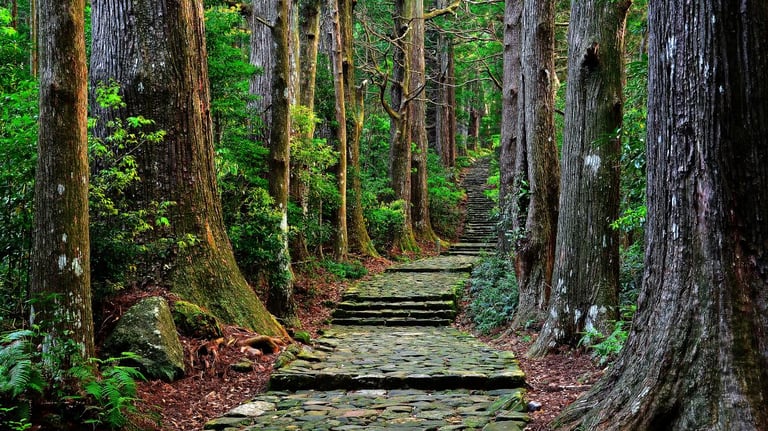

Kumano Kodo
The Kumano Kodo is a historic pilgrimage route located in the southern part of the Kii Peninsula in Japan that leads to the Kumano Sanzan (Kumano Hongu Taisha, Kumano Hayatama Taisha, and Kumano Nachi Taisha). In 2004, it was registered as a UNESCO World Heritage Site (cultural heritage) as "Sacred Sites and Pilgrimage Routes in the Kii Mountain Range," and is known as a very important tourist destination and historical heritage in Japan.
Meoto Iwa
The Meoto Iwa rocks are made up of two rocks, called "Husband Rock" and "Wife Rock." The Husband Rock is about 9 meters tall and the Wife Rock is about 4 meters tall, and the two are tied together with a 330 meter long rope. They are revered as symbols of marital harmony, matchmaking, and household safety. This place also symbolizes the fusion of traditional Japanese beliefs and nature.
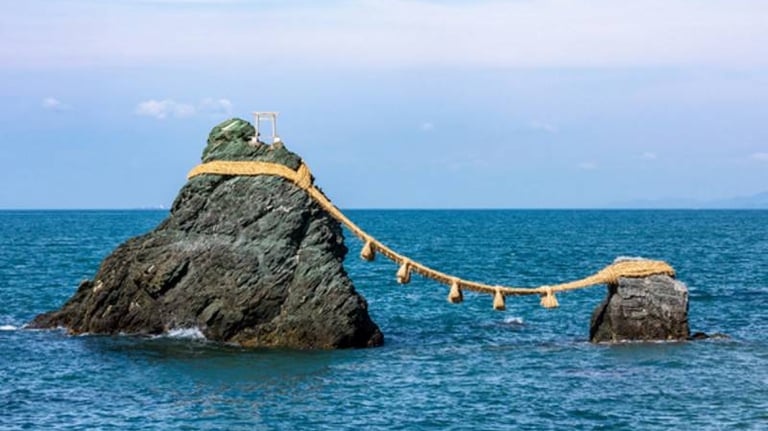

Miejima Observatory is a scenic spot in Shima City, Mie Prefecture, known as a place where you can get a panoramic view of Ago Bay on the Shima Peninsula. The beautiful ria coastline of the Shima region, large and small islands, and pearl rafts spread out below, captivating visitors. The sunset and night views are particularly beautiful, making it popular among tourists and locals alike.
Mieshima Observation Deck
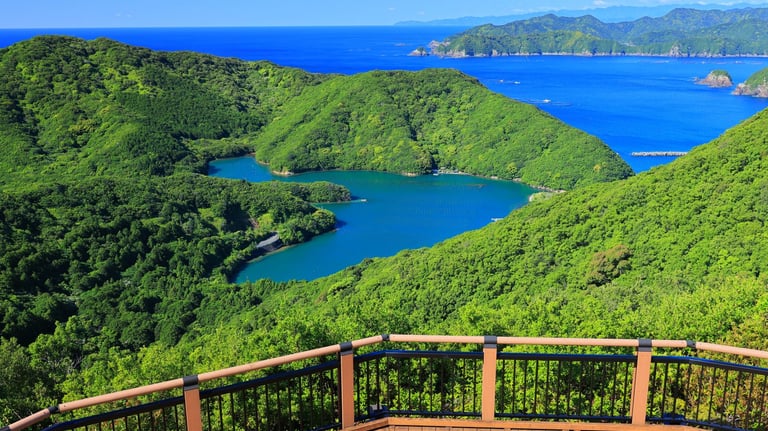

Okage Yokocho
Okage Yokocho is a sightseeing area in Ise City, Mie Prefecture, and a popular spot for visitors to Ise Jingu Shrine. It is characterized by streets that recreate the streets of the Edo period, lined with traditional buildings and stores, and is loved not only by tourists but also by locals. As a place to eat, buy souvenirs, and experience history, it has become a central part of Ise sightseeing.
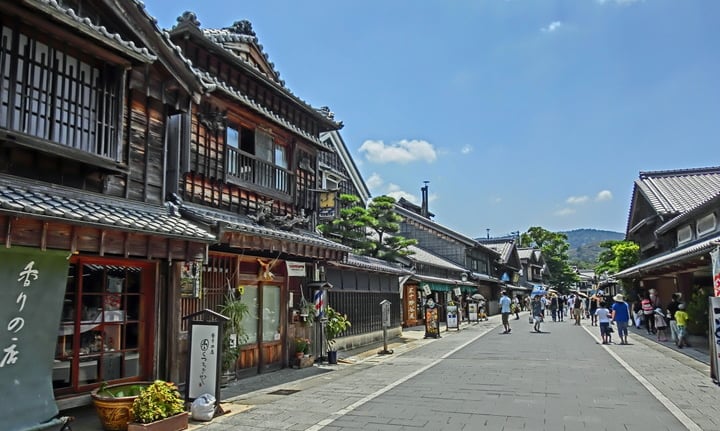

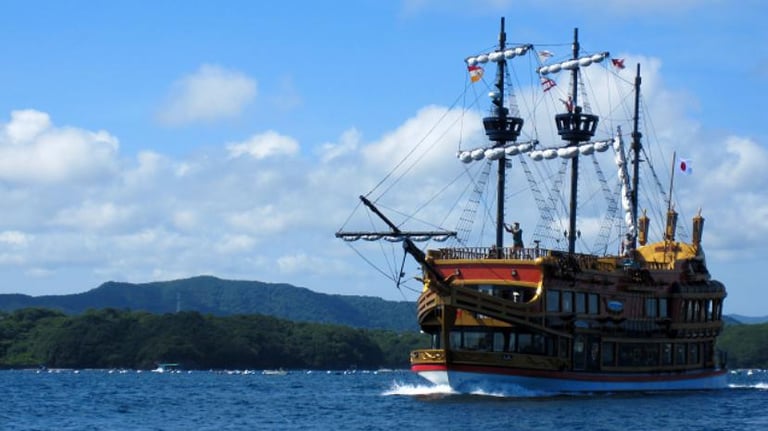

Kashikojima España Cruise is a sightseeing ship based in Kashikojima, Shima City, Mie Prefecture, featuring an elegant exterior and interior modeled after the Spanish luxury liner "Juan Sebastián Elcano. It is popular among many tourists as a special experience that allows them to enjoy the beautiful rias coast of the Shima Peninsula and the spectacular view of Ago Bay from the sea.
Kashikojima Espana Cruise
Nagashima Spa Land
Nagashima Spa Land is a large amusement park located in Kuwana City, Mie Prefecture, and is one of the leading theme parks in Japan. With a wide range of attractions, a shopping mall, and hot spring facilities, the park is popular among families and couples alike. The park is especially famous for its “Steel Dragon” and “Steel Dragon 2000” coasters, which attract many tourists from Japan and abroad.
